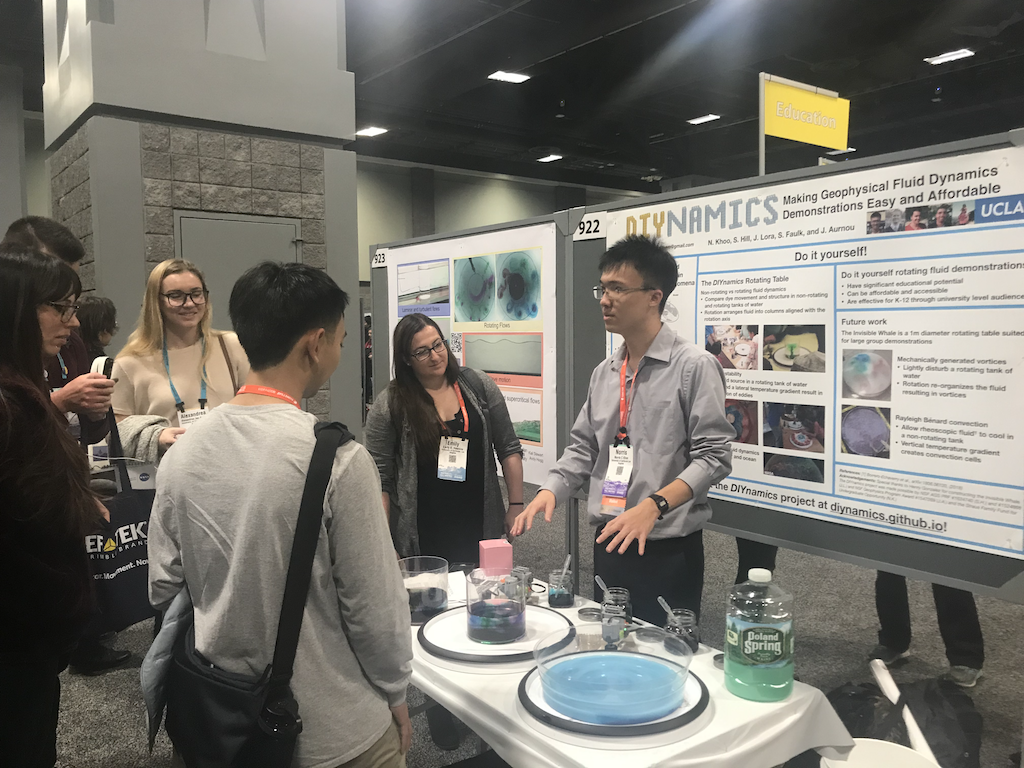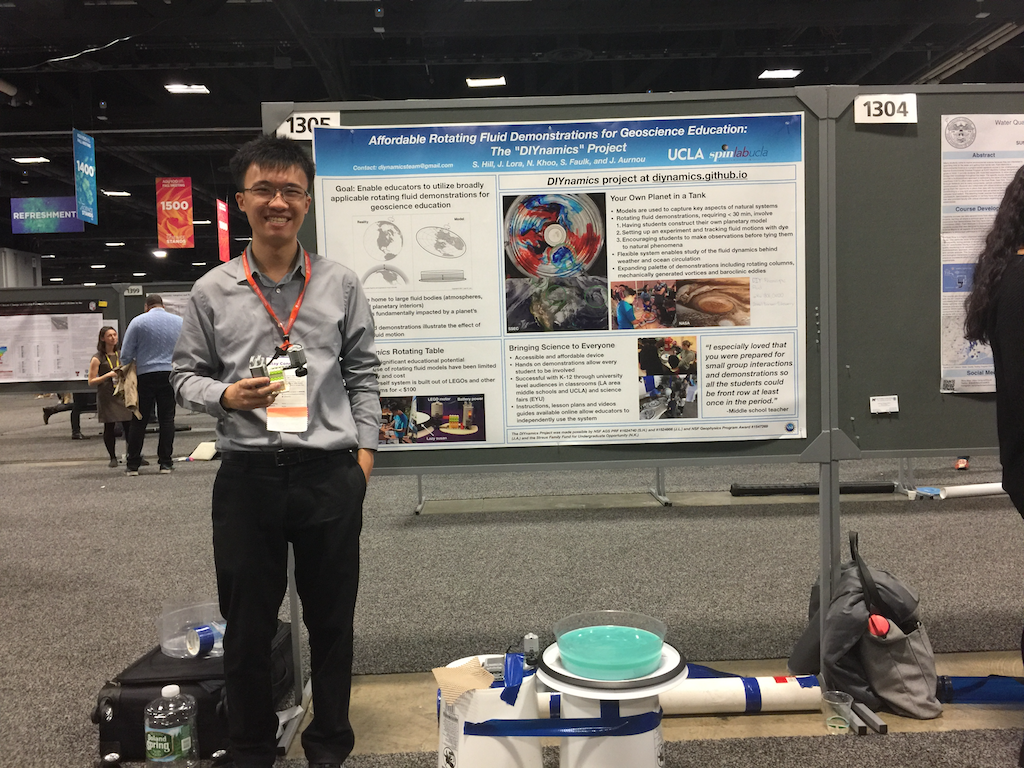- Thu 13 December 2018
- events
- Norris Khoo
- #conference, #outreach, #education

Norris describing experiments possible using the DIYnamics table and their relevance to the behavior of planetary fluid bodies. Over the course of two poster sessions, we had the opportunity to share our educational tools with dozens of conference attendees from diverse backgrounds.
On December 11 and 13, 2018, the DIYnamics team presented at the Fall 2018 meeting of the American Geophysical Union (AGU). AGU, currently celebrating its 100th anniversary, annually holds the largest geoscience conference in the world. Norris, Spencer and Jon had a great experience spreading the word about DIYnamics and listening to feedback from members of the geoscience community - including some who are already using our materials!

Norris sharing the household items necessary to create your own geophysical fluid dynamics model. The goal of DIYnamics is to promote geoscience education by making physical models, a useful tool for studying large scale real world phenomena, as accessible as possible.
AGU provided a unique opportunity to share DIYnamics with individuals from institutions around the world. During our poster sessions, we prepared demonstrations centered around the DIYnamics table - a fun logistical challenge 2,500+ miles away from home! We showed how physical models of planetary fluid bodies can be constructed using household items, whether they be LEGOs + a turntable for our rotating table or a frozen can for our cold source. These accessible tools allow audiences at all levels to observe the fluid dynamics behind weather, ocean circulation and more providing tremendous educational benefit!

Norris with his jerry rigged DIYnamics table setup. Experiments can be conducted with readily available resources and the number of “recipes” continues to grow.
At the conference, we conducted experiments highlighting solid body rotation, mechanically generated vortices and baroclinic instability. For the big picture, we hope that our physical models help individuals think analytically when approaching real world phenomena. Models are integral to science because they simplify and facilitate the study of complex systems.

After placing rheoscopic fluid in a rotating tank, we observed an interesting pattern of spirals arranged in concentric circles. This can be attributed to rotating convection, prompted by differences in temperature at the top and bottom of the fluid body, resulting in the formation of columnar structures (spirals are their surface manifestation). The concentric circle arrangement occurs because the bottom of the tank features similar ridges.
The DIYnamics team was amazed by Borrero-Echeverry et al. (2018)’s “do-it-yourself” rheoscopic fluid made using Barbasol shaving cream. Rheoscopic fluid contains small particles suspended in water and allows audiences to track the flow of fluid. At AGU, we greatly enjoyed talking with individuals who share our passion for outreach and hearing stories of the DIYnamics table in use! As more people adopt our system, we are excited to see what experiments the community has in store!
Thank you to the AGU for providing a platform to share DIYnamics, the EPSS Strauss Family Fund for Undergraduate Opportunity for supporting Norris’ first conference visit and last but not least, the conference attendees who came to our poster and provided their valuable feedback.
